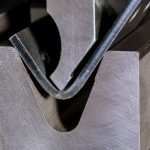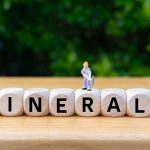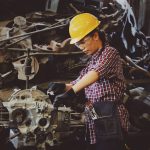Norican Global A/S is a Danish mid-market, multinational corporation with just over €500 million in revenues. The company employs approximately 2,700 employees, spread across 60 global locations and serve 10,000 customers in over 100 countries. The company works with the metal part formation and metal part preparation industry segments through their leading technology brands of DISA, Italpresse l Gauss, StrikoWestofen and Wheelabrator. This month, CEO Today had the privilege to speak to Robert E. Joyce Jr, who has been serving as the Norican Group CEO and President since its founding in 2008, through the merger of DISA and Wheelabrator.
Can you tell us a bit about your journey prior to becoming the President and CEO of the Norican Group?
Prior to that that, I was the CEO of the Wheelabrator Group from 2003 until the merger. From 1996 to 2003, I was an executive with USFilter, a NYSE-listed Water Company, beginning my employment as a General Manager of its Industrial Water Systems business and ending as the Executive Vice President of Operations. I also have experience as a Management Consultant with Deloitte & Touche, as a facilities engineer with Merck & Co., and as a Captain in the United States Marine Corps. I have a Bachelor of Science Degree in Aerospace Engineering from the University of Michigan, and a Masters of Business Administration Degree from the Wharton School, University of Pennsylvania.
The Norican Group was created by the merger of DISA and Wheelabrator – can you tell us a bit more about the merger? Were there any challenges that the two companies were faced with?
In 2003, the Wheelabrator Group was spun out of USFilter to US-based private equity backed investors. At the time, Wheelabrator was fundamentally a US-centric technology provider with some limited European-based operations. Our strategy from the start was simple – to expand internationally, to broaden our technical offer, to create a strong local aftermarket service network and to eliminate fixed capacity from the industry. To support this strategy, we sought out, and eventually acquired, a new, more internationally oriented, private equity partner based in Europe. We consummated that transaction in 2006. Our first step in this new partnership was to pursue a merger with DISA.
DISA was a long-time competitor, with a direct overlap in the surface preparation business with Wheelabrator. Strategically, the merger created three distinct advantages for Norican. First, it allowed us to eliminate fixed industry capacity in this arena within Europe. Second, as DISA was, and remains, the largest provider of vertical green sand moulding equipment in the world, it allowed Norican to dramatically expand its technical offer to customers within the iron foundry segment. Vertical sand moulding is the preferred process technology for the world’s disc brake manufacturers.
Finally, it accelerated the Norican growth and breadth of technical offer in both India and China. DISA had a twenty-year head start over Wheelabrator in establishing a regional footprint in the emerging economies. By merging the two together, we were able to broaden the technical offer within these fast-growing markets by leveraging the existing local sales channels previously established by DISA.
It was for these three reasons that the merger with DISA made sense. The deal financially closed in September 2008, one week before the Lehman Brothers collapse. It was also subject to a German Bundeskartellamt “condition subsequent” divestiture requirement.
We had two major operating challenges with the post-merger integration. The first, and most obvious, was the financial crisis itself. This was exacerbated by the Bundeskartellamt mandate to sell off three of our business units post-close, and until this was accomplished, no integration activities between Wheelabrator and DISA could occur. What made this latter requirement more demanding was the fact that one of the entities was from the acquired DISA, and two were from the acquiring Wheelabrator. By German consent decree, all three had to be ring-fenced and managed by a third-party trustee until such time that the divestitures were complete. Furthermore, no communications or management actions between these entities and the legacy parents (DISA and Wheelabrator, respectively) was to be allowed. It took nine months to sell off the three businesses. During this entire time, senior management was under constant scrutiny by the Bundeskartellamt to prove that it was not stealing market share from the ring-fenced entities. The concern of the German government was the unprecedented decline in the collective revenues of the trust-managed entities that, in their opinion, could only be explained by the parent companies diverting revenues. What they failed to understand during this process was that the parent company’s revenues were falling by the same amount.
Despite these external constraints, we successfully divested the three trust-held businesses by May of 2009, and we were given approval by the German Government to begin our integration. The subsequent integration became the basis for the newly created Norican Group.
What were the goals that you arrived with, as the CEO of the company, in terms of the future of Norican back in 2008?
Our collective goal for the Norican Group in 2008, was to recover the value lost during the financial crisis as quickly as possible, while at the same time, creating the growth platform within our industry. One of our greatest accomplishments came during the financial crisis recovery. When some of our larger, well-known and respected customers were working through their own financial challenges, we stayed focused on the future, cutting costs as required while at the same time, investing in innovation for the future. We never lost money during this time period despite a drop of revenues of around 30%. We emerged from the crisis in 2011/2012 stronger than before, with a much broader pipeline of innovative technologies.
Could you describe your business model in brief? Has it changed over the years?
At the time of Norican’s creation, we adopted a strategic business model based on global lines of business. Each core brand, DISA and Wheelabrator, would be responsible for the global p&l for their respective technology offer. Prior to the merger, both companies were mostly driven by the financial results of their legal entities, which created internal inefficiencies from a combined group perspective. Serving a global customer from multiple sites obscured the collective profitability of that account, due to the local accounting focus. The Managing Director of one country, as another example, would never see the necessity to move production to another country to improve profits. His goal was to maximize his own profits. By moving to a global line of business, we explicitly took away this sub-optimization by holding the senior managers accountable for the entire customer and product line profitability.
With the acquisition of StrikoWestofen and Italpresse in April 2017, we have taken our second step in our strategic evolution. To provide scalability to the business, while maintaining our customer relationships in the region, we made two organizational adjustments.
First, we created a common, regional sales and service organization responsible for selling and servicing all Norican technology in the region. This reinforces the local customer relationship in each region we serve, by providing a broader array of technical solutions. It also allows us to grow through additional acquisitions without having to affect the customer interface.
Second, we took all the activities that were common to all lines of business (sourcing, production, information systems, lean improvement) and created a new, internal Shared Services & Supply Chain group. Their objective is to ensure that the Global Product Groups remain cost and quality competitive both now and into the future. The benefit of having these functions in a shared cost group allows us to more easily benchmark our costs to the market place, something that previously was not as easily done.
You recently completed the acquisition of the Light Metal Casting Solutions Group – what doors does the acquisition open?
Our customers in grey and ductile iron foundries have been growing at about 2.5 to 3% per year, a trend that is not expected to change in the future. Since their end customers are disproportionately automotive related, we took a hard look at the long-term trends in this strategic end-market. The two macroeconomic trends fundamentally transforming this market are 1) decreasing CO2 emission standards, and 2) the resulting light-weighting of vehicles.
The Government-mandated CO2 emission standards are having two pronounced effects on the types of vehicles which will be produced in the future. First, we are seeing an increasing number of smaller, more urban friendly vehicles being sold in the market. Within these vehicles, we are seeing smaller, more fuel-efficient internal combustion engines that are more powerful than their predecessors. At the same time, we are seeing an increased emphasis and market demand for battery operated vehicles. Both trends will reduce CO2 emissions.
Both trends are also leading to a fundamental light-weighting of vehicles, regardless of its motive power source. Our customers are looking to swap out the historically heavy, structural components (primarily made of steel) for much lighter alloys that have similar or superior structural attributes. The key beneficiary of this process is aluminium. In the coming years, aluminium is projected to grow at roughly twice the rate of steel and iron within a car platform. A key element of this growth will come from a die-casters ability to produce structural components capable of replacing its steel counterpart.
Acquiring the Light Metal Casting Solutions Group, then, allows us to participate in this faster growing market segment within the automotive supply industry.
Where do you want The Norican Group to be in 5 years’ time?
Our goal is become the world’s leading provider of metallic parts formation and preparation technology. We will achieve this through a combination of organic and inorganic growth.
Organically, we have very specific growth targets set up by region and based on two levers. The first is to bring new innovation to our existing customers. And the second is to provide more local products and services to our industry’s installed base, whether of its technology origin. Both will be tailored through a singular lens of improving our customers’ overall profitability.
Inorganically, we expect to acquire additional market-leading technology portfolios to expand the breadth of the value we can offer to our customers. As we have demonstrated through the creation of Norican, and with the most recent acquisition of LMCS, we will judiciously use acquisitions to build out the breadth and depth of our technical expertise.
What advice would you give to other entrepreneurs?
Choose your financial partners wisely. A wrong choice in this area can easily destroy your vision. The right choice can take you to heights you never contemplated.
What is your philosophy on business or life, in a nutshell?
Leadership is about attracting followers. Without followers, nothing can be achieved.
About the Norican Group
Norican Group is home to five leading, globally operating brands: DISA, Italpresse Gauss (incorporating Italpresse Industrie and Gauss Automazione), StrikoWestofen and Wheelabrator.
As one strong global partner, we are able to serve you better, faster and more efficiently, giving you easy access to all we have to offer and working in partnership to keep you well ahead of the curve.
From melting, dosing and moulding through to surface preparation, we provide the solutions to solve your challenges.
We are shaping industry
Our technology sits at the heart of best practice across industries, continually pushing forward the state of the art.
A global network of engineering expertise, manufacturing capacity and service support ensures we are where our customers need us to be, at every stage of their process and for every challenge they may face.
As one, we can do more
Joining together our five incredible brands in one company means we can be even closer to you and offer you more.
Our joint know-how stretches across sectors, materials, geographies – and it doesn’t just stop where one machine ends.
Together, we can bring you ever more sophisticated integrated solutions, drawing from our vast toolbox of technologies, machines and processes. In the context of Industry 4.0, this bigger picture view will be invaluable.
DISA
End-to-end grey iron foundry equipment, encompassing DISAMATIC vertical moulding lines, DISA MATCH matchplate moulding and DISA FLEX horizontal moulding solutions, supported by sand plant solutions and core technologies.
Italpresse Gauss
Complete, integrated light alloy casting solutions, including machines and automatic work cells for high-pressure, low-pressure and gravity die casting, with specialist expertise in supplying work cells for the production of complex automotive castings.
StrikoWestofen
High-end furnace technology and heat treatment solutions for the global light metal casting industry, including StrikoMelter melting furnaces, Westomat dosing furnaces, as well as sophisticated continuous or batch-type heat treatment systems.
Wheelabrator
Surface preparation technology, spanning both wheel and air blast equipment, parts and services, as well as vibratory finishing solutions and subcontract shot peening services.










